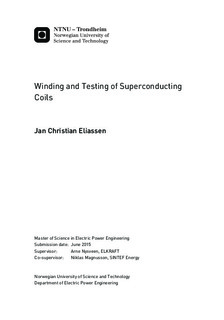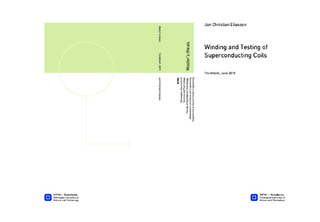| dc.description.abstract | Superconducting rotor windings are considered for future large offshore wind turbines for their low weight, volume and their possibility to reduce costs. In a joint European project, INNWIND.EU, a superconducting small scale generator pole will be designed, build and tested. In this master thesis, the coil will be constructed out of ten sections, each consisting of a double pancake coil with 104 turns. These coils will be wound with a wet-winding technique, without a specific turn-to-turn insulation where the applied epoxy constitutes the insulating layer between turns. The insulating ability of the epoxy is validated by measuring the turn-to-turn resistance. Several test coils has been built, tested and investigated for possible internal contacts. The results indicate that the coil will not be damaged during normal operation, DC ramping or AC magnetic fields in the rotor windings. However, the winding method relies on the fabrication of the MgB2 wire, where irregularities has been discovered on the wire which has caused an internal contact. A splicing procedure has been developed. A custom designed high power soldering tool has been constructed and joints are tested. The joints will produce approximately 1 - 5mW during operation. | |

